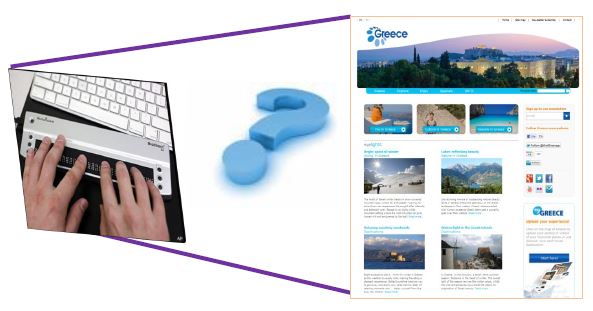Accessibility Review of European National Tourist Organisations’ Websites, 2012
Share on social media
Presentation of a benchmarking study carried out by ENAT. Between August and October 2012 41 websites were tested for compliance with Web Content Accessibility Guidelines - to see if they are accessible to people with disabilities. Secondly, the content of the websites was examined for information specific to the needs of visitors with disabilities and other people who need good access. Download the study report in PDF format and other resources from this page.
 Presentation of a benchmarking study carried out by the European Network for Accessible Tourism (ENAT). Between between August and October 2012 researchers examined 41 websites of European National Tourism Organisations (NTOs).
Presentation of a benchmarking study carried out by the European Network for Accessible Tourism (ENAT). Between between August and October 2012 researchers examined 41 websites of European National Tourism Organisations (NTOs).
NTO websites were tested for compliance with Web Content Accessibility Guidelines - to see if they are accessible to people with disabilities.
Secondly, the content of the websites was examined to see if NTO websites contained information specific to the needs of visitors with disabilities and other people who need good access, for example when visiting destinations, in accommodation, in transport or at visitor attractions.
The results showed that no NTO website was completely free from accessibility errors.
Furthermore, only 19 out of the 41 websites studied contained any information specific to disabled travellers. In many cases this information was not easy to find, due to the use of variable terminology and the low priority given to this type of information.
Commenting on the benchmarking study, Ivor Ambrose, ENAT remarks:
"These findings point to a lack of awareness among many NTOs about the importance of using web accessibility standards for reaching all potential customers. NTO managers and web designers should also know that sites that are built according to the WCAG guidelines will work quickly and smoothly on all platforms, which is clearly an added market advantage".
Ambrose adds: "Having information pages about accessibility for visitors with disabilties, seniors, their families and friends - or links to relevant websites - is simply a "must" for destination managers nowadays. I think no country or region can afford to 'opt out' of a market that is worth tens of billions of Euros annually".
"Looking on the bright side of this study, it is refreshing to see that some NTOs are now stepping up to the mark and posting key accessibility information about their destinations. We look forward to better and better performance from the NTOs in the coming years, as the positive messages about accessible tourism marketing catch hold", concludes Ivor Ambrose.
- Following the study, which was funded by the European Commission through the eAccessplus Thematic Network, ENAT has made a set of recommendations for improving the accessibility of tourism websites and providing accessibility information to visitors.
- ENAT and the European Travel Commission, which is made up of 34 European NTOs, have agreed to work together to raise awareness among NTOs and to help improve their e-marketing practices with respect to accessibility issues.
Download the Study Report in PDF format from the right-hand panel.
Further reading
Read more about e-Accessibility in Tourism and download the ENAT tourism information posters at the eAccessplus Project Page
For technical information about Web Accessibility, visit The Hub at eAccessplus.
